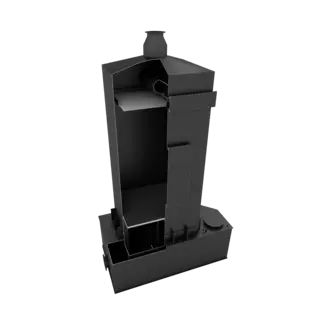Removal of volatile pollutants
The strip or desorption process is an established and reliable process for which ABIONIK offers plants for drinking water treatment or groundwater remediation. According to the principle of desorption pollutants are dissolved out of contaminated water and thereby transferred into the gas phase. Depending on the application a gas cleaning with an activated carbon filter follows.
A typical application for desorption plants (also: strip plants or Trickler) is the deacidification of drinking water by reducing the concentration of carbon dioxide dissolved in the water. This serves to prevent the transfer of undesirable substances from the drinking water pipes into the drinking water, to improve subsequent treatment processes or to protect plant components from increased corrosion.
Removal of dissolved hydrocarbons
Desorption plants can also be used to remove dissolved hydrocarbons that occur in the production or industrial use of e.g. solvents, hydraulic oils, adhesives or paints, refrigerants and pesticides. Some of these substances are highly toxic, carcinogenic and can change the genetic make-up of humans and animals if they are absorbed, for example, via drinking water.
Some of the substances to be mentioned here are
volatile aromatic hydrocarbons (BTEX), e.g. benzene, toluene, ethylbenzene, xylenes
volatile chlorinated hydrocarbons (LCKW), e.g. trichloroethene, tetrachloroethene, cis-1,2-dichloroethene, 1,1,1-trichloroethane
aliphatic ether, e.g. methyl tert-butyl ether (MTBE)





